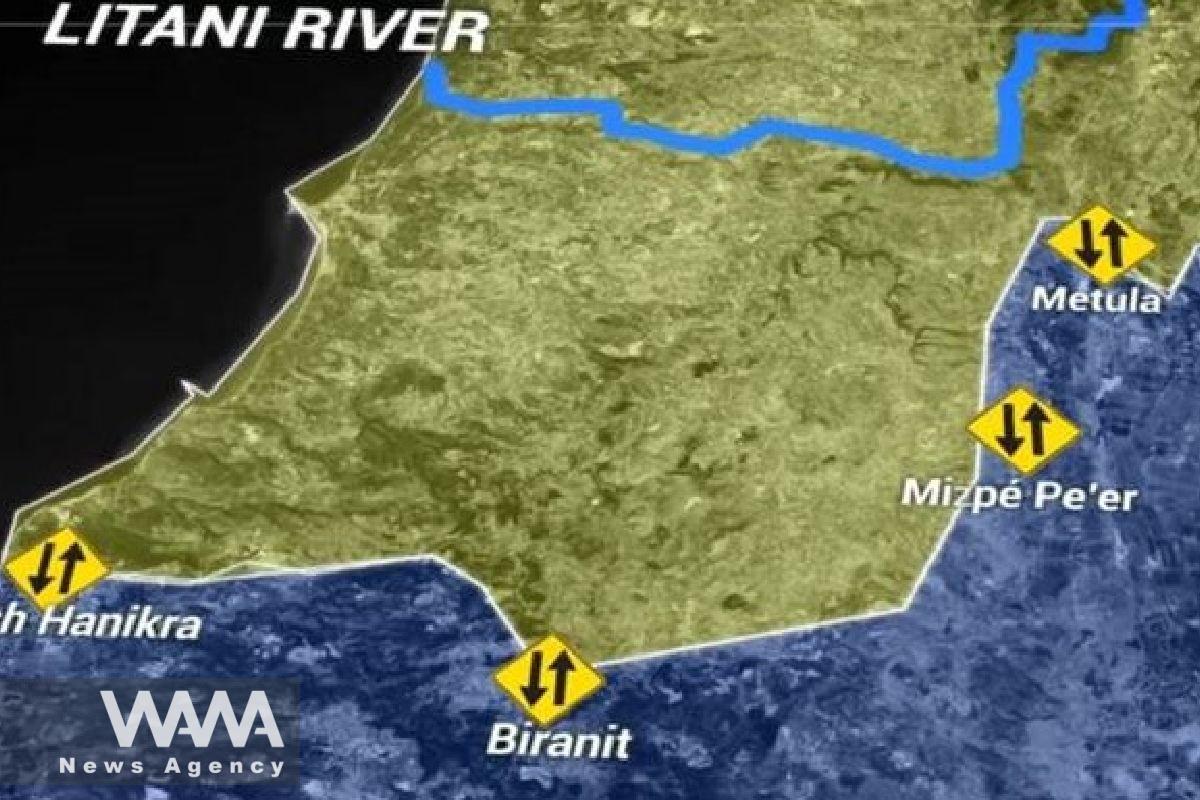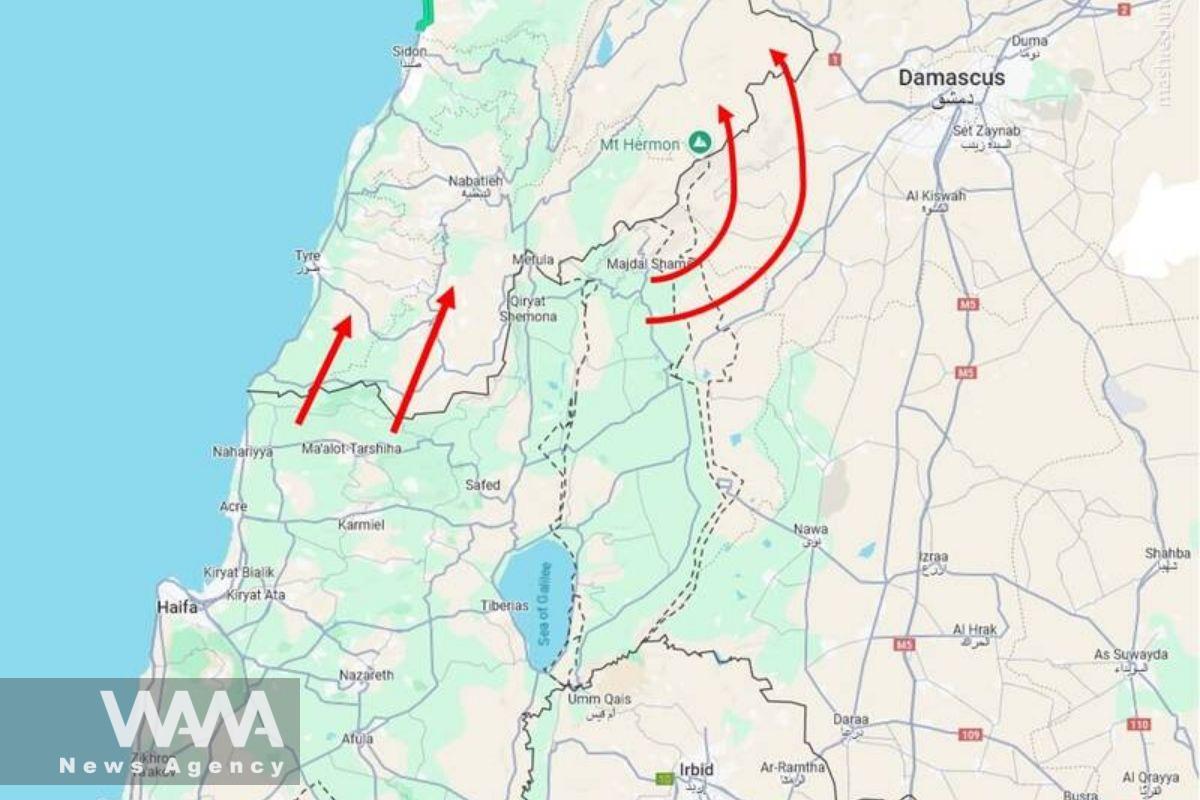Is an Israeli Ground Operation in Lebanon and Syria Imminent?
WANA (Sep 30) – A few weeks ago, members of Israel’s security cabinet claimed they were implementing a large-scale plan to secure the northern regions of the occupied territories and facilitate the return of displaced Israeli settlers to their homes.
Initially, there were significant disagreements within the cabinet, particularly between Prime Minister Netanyahu and Defense Minister Yoav Gallant, regarding the continuation of the war and the opening of a new front.
Gallant advocated for a ceasefire and the release of Israeli prisoners held by Hamas, while Netanyahu and other cabinet members were pushing to extend the war to the northern front and, in their view, suppress Hezbollah in Lebanon.

Nasrallah is Gone, But Hezbollah Will Endure
WANA (Sep 28) – A few minutes ago, Hezbollah officially confirmed the death of Sayyed Hassan Nasrallah, the influential leader of the group. This news, which was previously claimed by Israel, is no longer a rumor but a reality that could push the Middle East into a new phase of tensions and conflicts. Nasrallah’s death […]
A widespread wave of assassinations targeting resistance commanders
In the spring and summer of this year, Israel killed several senior resistance commanders, such as Wissam al-Tawil, Habib Maatouk, and others, through drone strikes or air raids in southern Lebanon.
Following the incident in Majdal Shams in July 2024, which was essentially a self-inflicted blow by Israel’s Iron Dome missile system, they used the killing of Druze settlers in the region as a pretext to assassinate Fuad Shukur, the chief commander of Hezbollah’s missile unit. Shortly after, an assassination attempt was made on Ismail Haniyeh, the political leader of Hamas, in Tehran, leading to his death.
With the issuance of the order for operations on the northern front aimed at returning displaced settlers, a new and more intense wave of Israeli assassinations began. On September 20, 2024, Ibrahim Aqil, the overall commander, along with 12 other commanders from Hezbollah’s elite Radwan forces brigade, were killed in an attack on a building in the Dahiya district of Beirut.
In the following days, the Israelis attempted an unsuccessful assassination against Ali Karaki, the commander of the southern front, and successfully assassinated Ibrahim al-Qubaisi, the deputy of Fuad Shukur and Hezbollah’s missile commander.
The assassination of Seyed Hassan Nasrallah and Ali Karaki in Dahiya, according to many experts, could be the final move before launching a ground operation aimed at pushing the resistance forces back from the borders to behind the Litani River. But how will this operation be implemented?

Attacks on Shia Cities Justify Strikes on Tel Aviv
WANA (Sep 27) –The recent attacks on Beirut’s Dahiya were the most unprecedented and severe strikes in the ongoing war between Israel and Lebanon, leveling at least four multi-story buildings. The Israeli military announced that the target was Hezbollah’s main leadership headquarters, while some Israeli sources claimed the goal was the assassination of Seyed Hassan […]
The possibility of a simultaneous attack from southern Syria
Both in 2006 and today, the biggest challenge for the Israeli army in launching a ground assault on southern Lebanon is the difficult mountain passes with forested terrain in the border area.
This is especially true in the autumn season, with cloudy and rainy weather expected, which complicates aerial support for advancing ground forces and may result in muddy terrain, making it difficult for Israeli ground troops to pass. This situation would greatly favour the resistance forces, allowing them to launch heavy ambushes against Israeli armoured columns.
There are four main crossings along the border between Lebanon and the occupied territories, each with limited and risky passage. Crossing through them to enter Lebanese territory could lead to a repeat of the disasters Israel faced during the 33-day war in 2006. Israeli commanders have undoubtedly learned lessons from that conflict and are now seeking strategies to avoid heavy casualties.

Map of the location of the 4 land crossings on the Lebanon border and the Litani River, Social media/ WANA News Agency
If Israel aims to secure the northern regions and move its settlements out of the range of Hezbollah’s artillery and anti-tank units, it would need to advance at least to the edge of the Litani River. The Litani River is at its closest, just 3 kilometres from the shared border, and at its furthest, it extends approximately 30 kilometres into Lebanon.
In 2006, the attack from the central crossing (Biranit) toward the towns of Aita al-Shaab and Maroun al-Ras turned into a disaster for Israeli ground forces. Similarly, the attempt to advance through the Metula crossing (the closest route to the Litani) initially succeeded in the Wadi al-Hujayr region but eventually became a graveyard for Israeli armour.
Given the preparedness of Hezbollah’s defence units and their possession of newer and heavier weaponry, Israeli commanders may be seeking a new plan to bypass the resistance’s defensive lines.
According to this plan, which has been discussed by some Israeli and Western sources for some time, the ground forces of the Israeli regime intend to invade Syrian territory from the occupied Golan Heights and advance along the western bank of the Rif Dimashq province to re-enter Lebanese soil, thus circumventing Hezbollah’s defensive lines in southern Lebanon.

The red arrow on the left is the main route of the attack on southern Lebanon, and The Red arrow on the right is the possible route to bypass the defence lines of the resistance from Syrian territory, Social media/ WANA News Agency
Although this plan is considered somewhat ambitious and could potentially lead to direct conflict between the Syrian army and the Israeli invaders, it must be taken seriously as one of Israel’s possible strategies.
Any potential success in executing this plan could pose a serious threat to Hezbollah defenders south of the Litani River, effectively placing them in a pincer movement between the invading forces from Syrian territory and the northern occupied territories.












